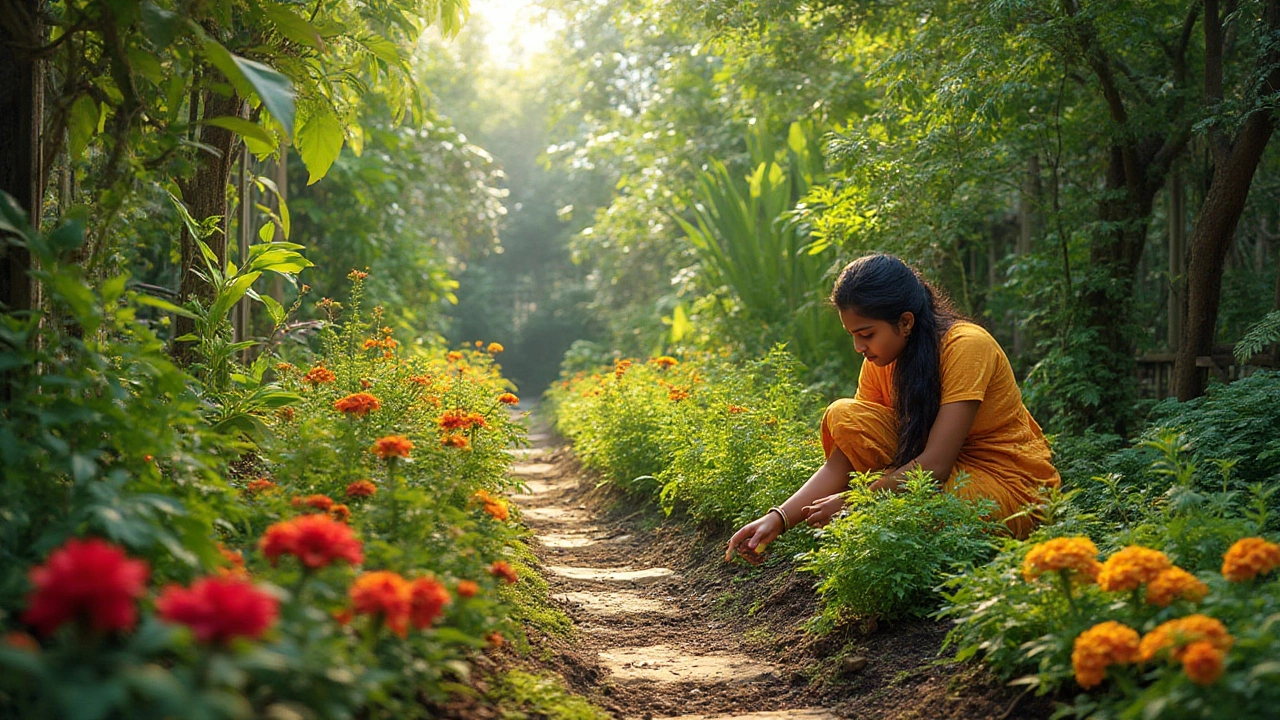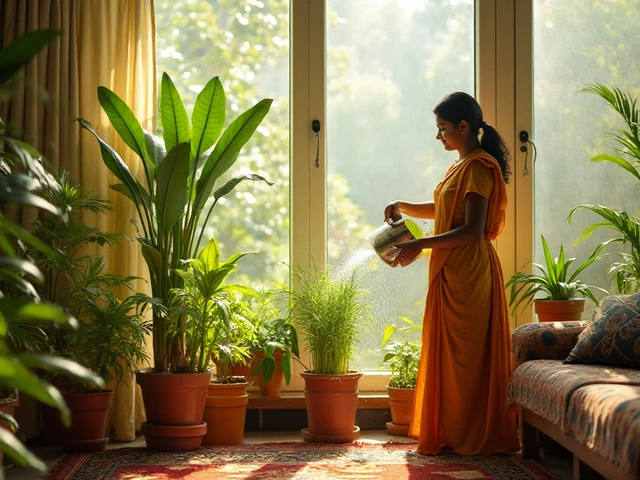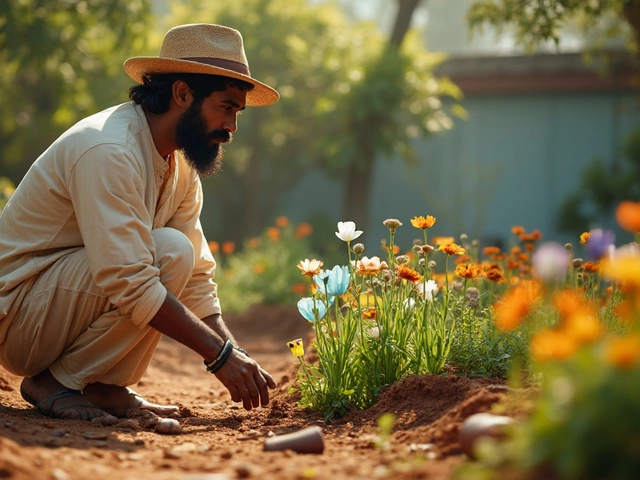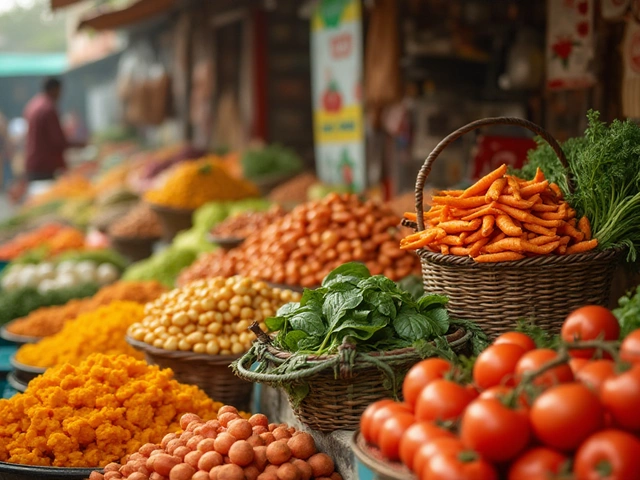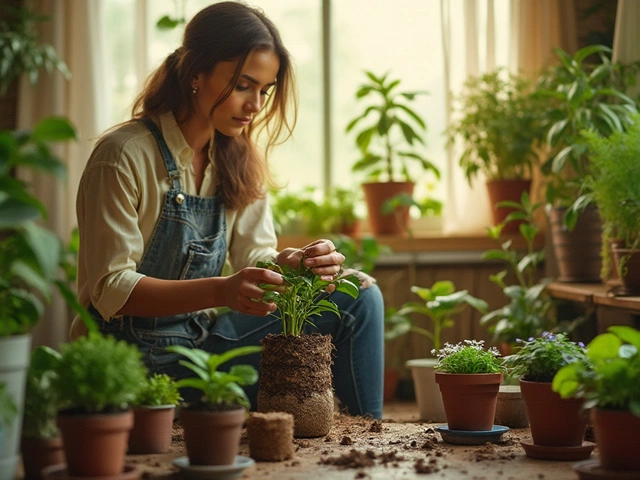If you wander out to the garden with your hands full of seeds, there’s a good chance you’re already guessing which plants might work well side by side. But the idea of 'sister plants' goes beyond just saving a bit of space or making things look pretty – there’s real science and practical know-how behind these combinations. Get this – ancient farmers in Central and South America put the 'Three Sisters' into the ground together for a reason: corn, beans, and squash weren’t just random picks; they were a survival system. The beans climbed the corn, the squash shaded the dirt, and all three grew stronger for it. It’s not just old folklore. Research from universities such as Cornell and Iowa State has found that companion planting, or using 'sister plants,' actually leads to reduced pests and bigger harvests. Whether you grow veggies, flowers, or even houseplants, understanding sister plants means better growth and less hassle.
What Are Sister Plants and How Do They Work?
The term 'sister plants' gets tossed around a lot in gardening talks, but it doesn’t mean the plants are related by species or family. Instead, sister plants are different types of plants that you grow together because they help each other out. Think of them as garden buddies with benefits. The story usually starts with crops – sure, you can grow a tomato and a basil side by side, but why? Here’s the kicker: basil actually repels some of the harmful insects that love to chew on tomato plants. Tomatoes, meanwhile, can provide a bit of shade that basil likes. Skip the chemicals, and let nature do the work instead.
Science backs this up more than most people realize. Botanists call it 'companion planting,' and it’s been studied worldwide. For example, studies out of New Zealand's Massey University found that marigolds can significantly reduce nematode populations when planted next to root and bulb crops. Marigolds (Tagetes) secrete substances through their roots that are toxic to certain harmful pests in the soil. Not magic – just good botany. When you plant carrots with onions, you confuse the carrot fly’s sense of smell, making your carrots safer. Add calendula flowers to the mix and you’ll pull even more beneficial insects into the garden, like ladybirds and hoverflies that feed on aphids. Sister plants work together above ground and below the soil. Some fix nitrogen (like legumes), others loosen packed earth (like daikon radish), and some spread out wide leaves to smother invasive weeds. That’s collaboration at its best.
But let’s not pretend it’s as simple as throwing random seeds together. Certain combinations really do not work. For example, planting beans near onions can be a disaster, because onions can stop bean growth through root chemicals. Likewise, sunflowers actually stunt potato growth with the compounds they release. That’s why it pays to check companion planting charts – or just take notes on what works in your own patch. This is where that 'sister' bond is more about synergy than just proximity. Plants act almost like teammates in a relay, passing nutrients, shade, and protection to one another. The classic 'Three Sisters' of Indigenous American farming (corn, beans, and squash) is only the most famous example. Each plant brings something unique: corn provides stakes for beans to climb, beans fix nitrogen for everyone, and squash acts as a living mulch, shading weeds and conserving water. It’s as clever as anything you’ll see in modern gardening, if not more so.
To see these relationships at work, look at the root zones of the plants you want to grow. Some root deeply (like tomatoes or sunflowers), while others stay near the surface (like lettuce or basil). Pairing deep and shallow-rooting plants means there’s less competition for water and nutrients. Above ground, tall plants can provide just the partial shade that lettuce or cilantro like as summer heats up. Even in small gardens or balcony pots, these partnerships matter. The wisdom? It saves time, fights disease, and gets you a better harvest with less effort.
Surprising Combos and Hidden Benefits in Modern Gardens
Everyone knows a few basics: tomatoes and basil, cucumbers and dill, carrots and onions. But there are some surprising sister plant combos that don’t make it onto most seed packets. Did you know that chamomile, often seen as a simple herb for tea, can boost the oil production and flavor of neighboring herbs like thyme and mint? Scientists at Wageningen University in the Netherlands found that certain aromatic herbs, when planted close together, actually encourage each other to produce more flavorful oils as a way to 'talk' chemically to each other. Crazy, but true!
If you’re into flowers, zinnias planted near cabbages will attract hoverflies that feast on cabbage aphids. Nasturtiums, famous for their edible leaves and flowers, act as a 'trap crop' – they lure pests like aphids and squash bugs away from more sensitive crops. You can simply pluck off infested leaves and keep the rest of your garden safe. Even roses benefit: garlic planted among roses helps deter black spot and aphid infestations, making garlic and roses a sophisticated 'sister' match you might not expect.
It doesn’t end with pests and pollinators. Companion planting can make your soil richer without you even noticing. White clover used as a living mulch between stone fruit trees (like peaches or plums) fixes nitrogen in the soil, feeding the trees and suppressing weeds at the same time. Research from Lincoln University here in New Zealand shows that integrating legumes and deep-rooted herbs into vineyards and orchards leads to less reliance on synthetic fertilizers and healthier plants over time. The numbers are convincing. Vineyards using companion planting had up to 30% fewer problems with root diseases and 20% higher biodiversity of helpful insects.
There are even pairs that help each other during severe weather. Tall sunflowers can act as a windbreak for delicate lettuces or spinach. In a country as windy as New Zealand, this might be the difference between a salad and an empty plate in spring. The options aren’t limited to veggies. Even in ornamental gardens, pairing daffodils and tulips with alliums keeps rodents from digging up prized bulbs, since alliums (like garlic and ornamental onions) give off scents that repel mice and voles. This is why top botanic gardens around the world mix their beds with both beauty and purpose.
There’s a social side, too. Walk through a community garden on a Saturday morning, and you’ll overhear tips passed back and forth: 'Put borage by your strawberries for bees!' 'Stick some radishes around your spinach to stop leaf miners!' For gardeners, sister plants are more than a trend – they’re a neighborhood tradition.
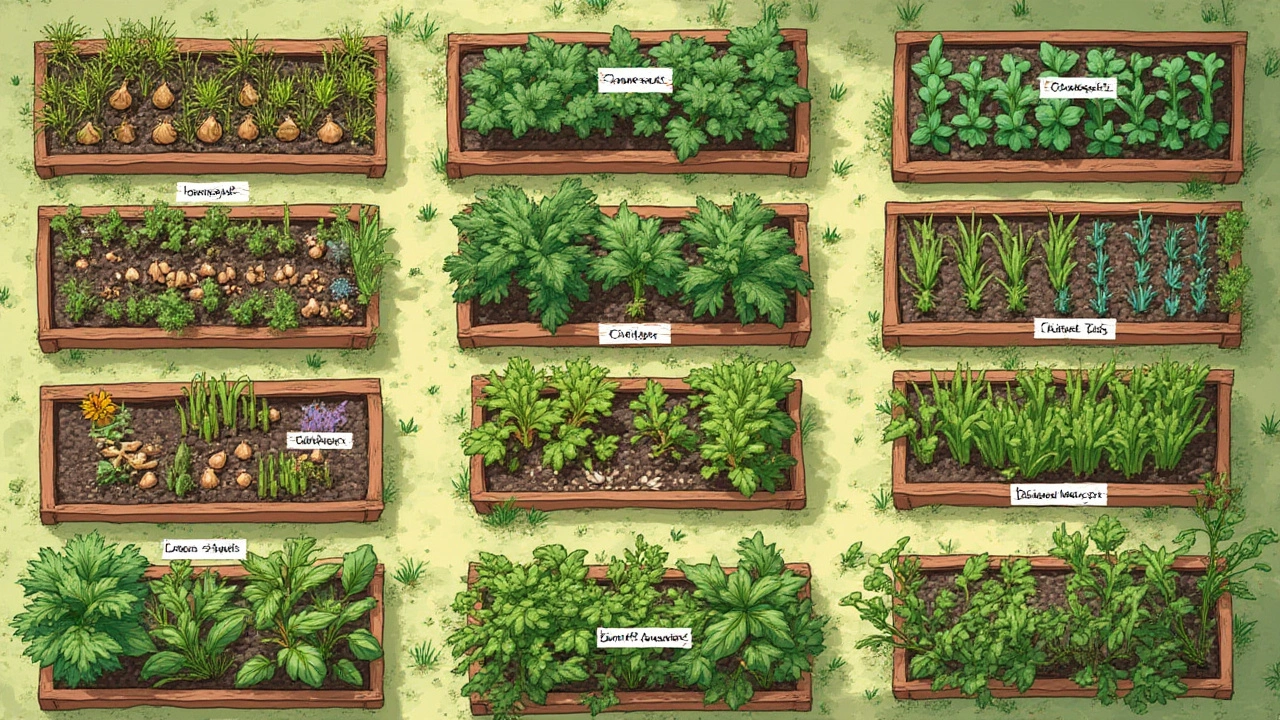
How to Identify and Use Sister Plants
You can’t just look at a seed packet and guess which plants want to be sisters. It takes a blend of good advice, a little reading, and sometimes just trial and error. But there’s a shortcut: pay attention to what thrives naturally together in the wild. Walk through a native bush here in New Zealand – you’ll see ferns and kawakawa under the shade of taller manuka or totara trees. The same principle works in home gardens.
Start simple. Make a plan for your space before you plant. If you grow from seed, sketch your beds on paper, and mark the sunniest and shadiest spots. This lets you pair tall sunflowers (which need full sun) with lower basil or lettuce (which appreciate some shade). If you want to dip your toes in, try these classic pairs:
- sister plants for tomatoes: basil, marigold, borage, carrots
- Sisters for squash: corn and beans (traditional three sisters), nasturtium, oregano
- Good partners for brassicas (cabbage, broccoli): dill, nasturtium, onion, sage
- Friends for strawberries: borage, thyme, chives, spinach
Some of these combos keep pests away, others boost flavor, and a few just fill in empty spaces for a lusher-looking patch. Don’t forget rotation. Even the best sister plants need a change of scenery each season to prevent soil diseases building up. If something didn’t work out, try another combination the next year and keep track in a notebook or gardening app.
When it comes to indoor plants, the rules change a bit, but you can still use sister principles. Ferns, which like more moisture, do well next to other humidity-loving houseplants like peace lilies and peperomia. Succulents grouped together not only look striking but share similar water and light needs, making watering straightforward and reducing rot from overwatering mixed types.
Timing matters, too. Fast-growers like radish or arugula can be tucked in among slower crops like carrots or parsnip. By the time the slower plants need extra room, the fast ones are ready to harvest. This leapfrogging lets you squeeze extra harvests out of the same square meter of soil. Urban gardeners, especially those limited to balconies or vertical planters, rely on these strategies to get more food from less space.
Here’s a handy data table summarizing some well-known garden pairings and their benefits, based on published trials and expert advice:
| Sister Plant Pair | Benefit | Reported Increase/Reduction |
|---|---|---|
| Corn + Beans + Squash | Pest reduction, improved yield | Up to 50% fewer pests, 20–30% more yield |
| Carrots + Onions | Pest confusion | 30% fewer carrot fly infestations |
| Tomatoes + Basil | Pest repellent, flavor boost | Positive impact on yield and taste reported |
| Marigold + Root Veg | Nematode reduction | 20–40% fewer nematodes in soil |
| Roses + Garlic | Aphid/black spot prevention | Improved rose health |
| Strawberries + Borage | Pollinator attraction, better fruit set | Noted increase in bee visits |
| Zinnia + Cabbage | Hoverfly attraction, pest eating | Visible reduction in aphids |
Common Mistakes and Extra Tips for Success
So you’re itching to try out some sister plant combos? Here’s where most people stumble: just because two veggies look good together doesn’t mean they’ll get along under the soil. The most common blunder is crowding plants too close. Even best friends need a bit of elbow room. Remember, competing for the same light, water, and nutrients can turn sister plants into rivals. Follow the planting distances on the seed packet, and err a little on the cautious side. It’s tempting to jam-pack your beds, but there’s logic to those gaps.
Another common mistake is mixing plants with wildly different watering or nutrient needs. For example, tomatoes want steady water, while Mediterranean herbs like rosemary prefer to dry out between drinks. If you plant these side by side, someone will end up unhappy. Group herbs and veggies with similar needs, and life gets a lot easier (and tastier). Soil pH is another sneaky culprit. Blueberries, which love acidic soil, simply don’t thrive near crops that need neutral or alkaline soil, such as brassicas or beans. Check your soil type or use a cheap meter, and plan accordingly.
Pests can crash the party, too. Trap crops are brilliant (nasturtiums, for example), but you have to be vigilant about removing pests and affected leaves. If you neglect them, those pests will just move along to the main crops once they’ve outlasted the bait. Mulching between plantings helps conserve water, keep roots cool, and suppress weeds, but avoid deep, soggy mulch right up against plant stems, or you risk disease. Don’t forget crop rotation year after year – growing the same sister pairs in the same spot every season builds up pest and disease trouble, rather than reducing it.
If you’re a data lover, keep a simple spreadsheet or notebook of what worked and what didn’t. Snap photos, jot down notes, and track what grew well together and which combos fizzled. Patterns will show up after a couple of tries, revealing your best sisterly matches for your garden’s microclimate and soil. Urban gardeners get bonus points when they experiment with small containers or even windowsill pots – many principles work at any scale. Even kids can join in, picking their own sister combos and watching the science happen before their eyes.
The final tip? Don’t overthink it. Nature pairs plants together all the time – your job is to observe, experiment, and adjust. Plants thrive on these alliances, and the evidence is too strong to ignore. Better flavor, stronger growth, fewer pests, and richer soil: once you get to know your plants' sisterly bonds, you honestly won’t garden any other way.
